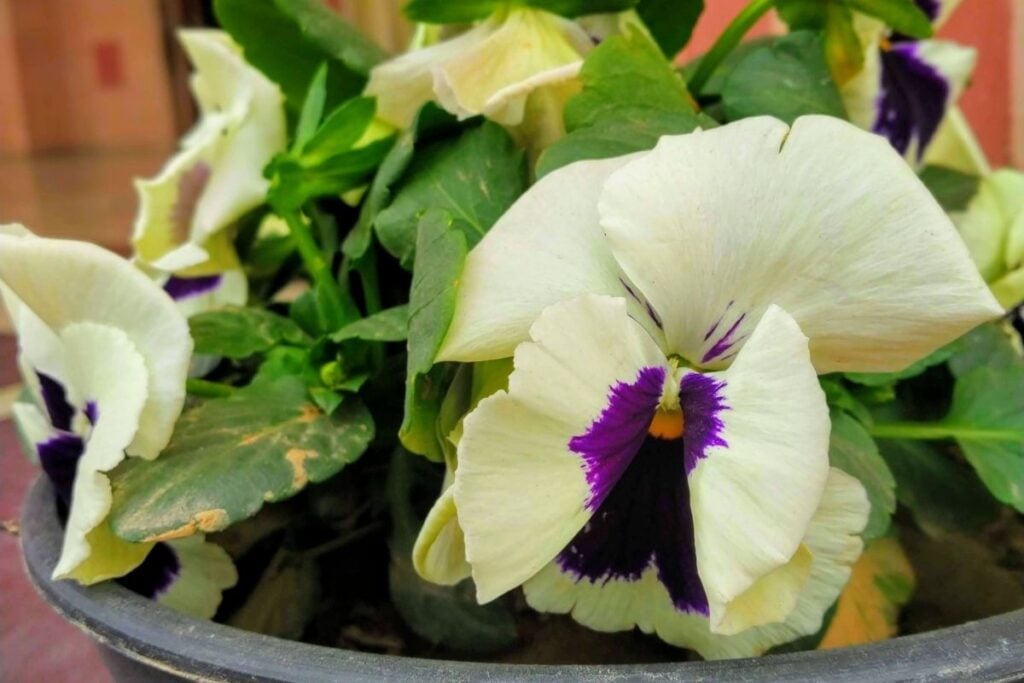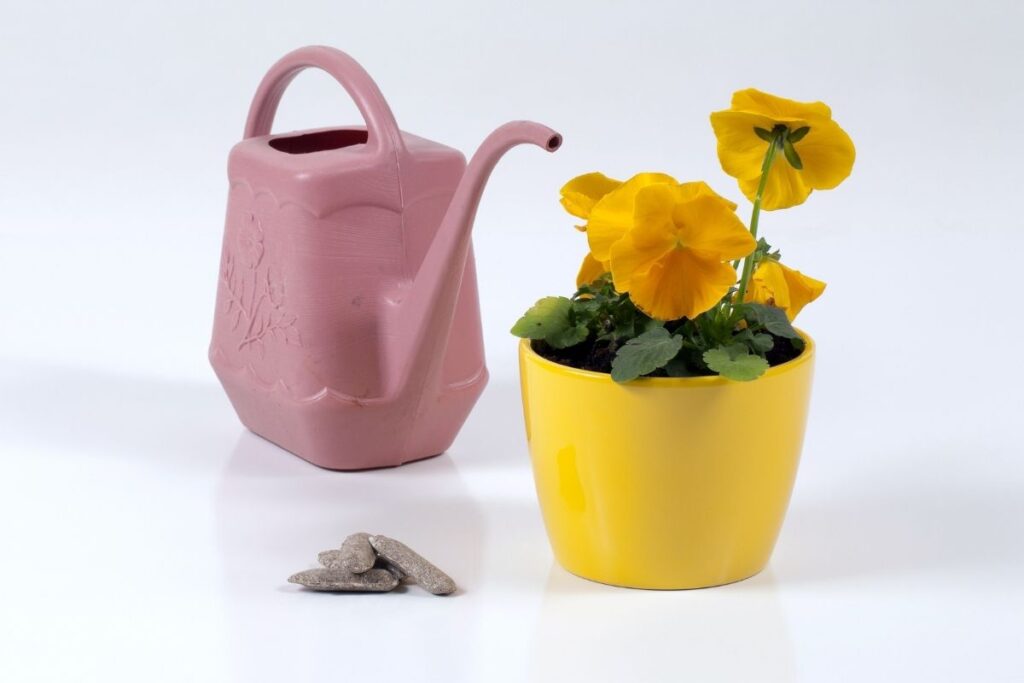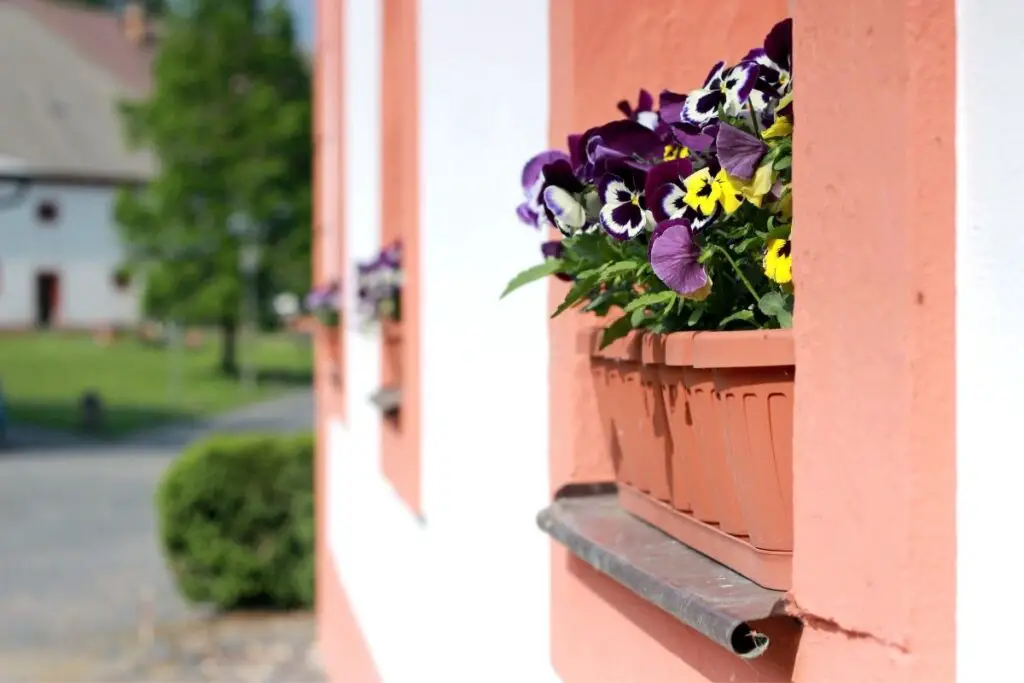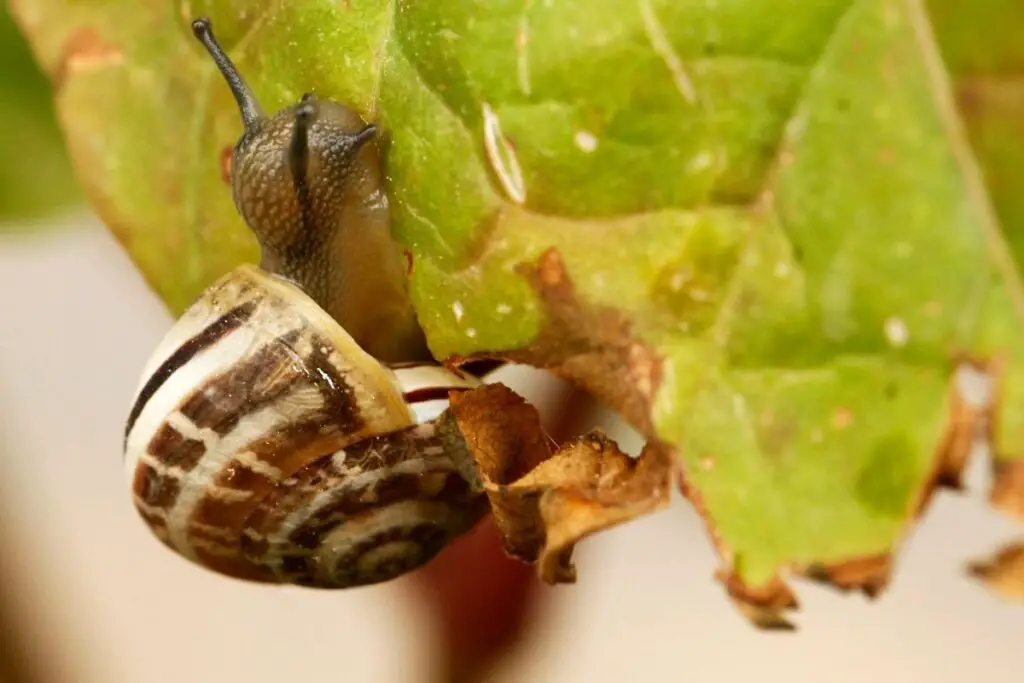Pansies are popular flowering plants found in most gardens. They are colorful flowers that are heart-shaped with overlapping petals. But these can be delicate when they grow some problems that tend to kill them.
So, in this article, we shall discuss all the problems due to which your pansies keep dying. We will also share possible solutions for all those problems.
Pest infestation and fungal infections are the root cause of wilting of pansies. Other causes include excessive heat, watering problems, poor soil quality, and lack of nutrients. Provide bright lighting, adequate watering, and fertilize during the growing season to keep your pansies thriving.
Pansies must be observed regularly to check their reactions to understand whether or not they are doing well.
You might get frustrated to see the sight of dead pansies over and over. Instead of getting impatient, you need to identify the exact reasons to understand why do your pansies keep dying.
This article will explain all the details about the reasons that cause the continuous death of pansies and how to treat the problems to revive the pansies.

What do my pansies keep dying?
There are many reasons due to which the pansies get affected and end up dying. Some reasons are:
- Too much heat
- Overwatering or underwatering
- Poor quality soil
- Lack of nutrients
- Too much light
- Lack of deadheading or pruning
- Overcrowded pansies
- Pest infestation
- Fungal diseases
Let us now talk about these causes in detail.
Excessive heat
Pansies are sun-loving plants that enjoy cool weather conditions. Pansies thrive best when the day is warm and the nights are cool during the spring and fall months. They survive well, even during the winter season.
Your pansies will also survive the summer if the temperatures remain below 21°C during the summers.
But if the temperature rises above 21°C, the heat will increase, and pansies will fail to tolerate the excess heat. Due to that, they will droop, get wilted, and finally, die without any protection from such scorching heat.
How to fix the problem?
To prevent your pansies from dying due to too much heat:
- Make sure that your region does not have extremely hot weather conditions.
- If the weather outside is sweltering, do not plant the pansies outside.
- Wait until the arrival of spring, and then you can plant and grow your pansies.
They will grow well in areas where they get bright sunlight throughout the day and the nights remain cool.
Also read: Where To Plant Pansies? (Best Place+Things To Keep In Mind)
Watering problems

Pansies enjoy evenly moist soil. Pansies are sun-loving plants that require at least four to six hours daily. So, the soil can get dried up quickly.
You need to provide the pansies with an adequate amount of water so that the soil doesn’t remain dry for an extended period. If the soil remains dry for too long, you will notice signs like chlorosis, which results from underwatering.
If the pansies are underwatered, they will fail to absorb enough moisture and nutrients from the soil and the roots. That will make the leaves yellow and dry and will start to fall. If not taken care of, then the pansies will ultimately start dying.
Just because pansies need a good amount of water doesn’t mean you should water them very frequently. If you burden them with excess water, that will cause overwatering problems in pansies, resulting in edema or root rot.
If the soil has a poor drainage system, it can contribute to overwatering issues in your pansies.
How to fix the problem?
To fix the overwatering problem, you first need to make a perfect soil mix for the pansy bed.
The soil must have a sound drainage system that can drain the excess water. You can add earthworms to the soil. This will help create a sound drainage system, and at the same time, will create ventilation for the roots to breathe.
Your pansy soil bed must be fertile and rich in organic matter. While preparing the soil bed, you can mix some compost.
This will help to retain enough moisture needed for the plants to absorb essential nutrients from the soil. It will also do the work of organic fertilizer to some extent.
Avoid watering your pansies when the soil is wet. Wait for the soil to dry out before you water them.
To revive the underwatered pansies, you need to keep an eye on your soil bed.
When the pansies remain exposed under the sun for six hours, the soil can dry up quickly, especially during the dry season. It would be best to water the pansies frequently in dry seasons.
The best way to avoid both problems is, keep checking the soil bed with your fingers.
If the soil feels clayey and sticks in your hand, give your pansy soil bed a break from watering. But, if the soil bed feels dry and hard, it is time to water them.
Also read: How Much Water Does A Pansy Need? (Pansy Water Requirements)
Looking for gardening supplies? We have tested 100's of products before recommending them to you guys. Check out our best pick below:
| Image | Gardening Supplies | Best Price? |
|---|---|---|
 Top
Top Top
Top | Raised Garden Bed Kit | Check On Amazon |
 | XLUX Soil Moisture Meter, Plant Water Monitor, Soil Hygrometer Sensor for Gardening, Farming, Indoor and Outdoor Plants, No Batteries Required | No Results |
 Top
Top Top
Top | 82 Pcs Garden Tools Set and Extra Succulent Tools Set | Check On Amazon |
 | Joeys Garden Expandable Garden Hose with 8 Function Hose Nozzle, Lightweight Anti-Kink Flexible Garden Hoses, Extra Strength Fabric with Double Latex Core, (50 FT, Black) | No Results |
 Top
Top Top
Top | Dual Chamber Compost Tumbler | Check On Amazon |
 Top
Top Top
Top | Sunnyglade Plant Stakes | Check On Amazon |
 Top
Top Top
Top | Organic Cold Pressed Neem Seed Oil | Check On Amazon |
 Top
Top Top
Top | Mighty Mint Gallon :-Insect and Pest Control Peppermint Oil | Check On Amazon |
 Top
Top Top
Top | Scotts DiseaseEx Lawn Fungicide | Check On Amazon |
 Top
Top Top
Top | Jacks Classic 20-20-20 All Purpose Fertilizer | Check On Amazon |
 Top
Top Top
Top | 30,000 Seeds Pollinator Attracting Wildflower Mixture | Check On Amazon |
 Top
Top Top
Top | Survival Vegetable Seeds Garden Kit-Over 16,000 Seeds | Check On Amazon |
Poor quality soil
Pansies grow well in rich loam and aerated soil. The soil must support proper drainage, which will help to drain excess water and at the same time retain enough moisture so that the plant can absorb the nutrients from the soil.
Pansies prefer slightly acidic soil. The pH level of the pansy soil bed should range between 5.4 to 5.8.
If the soil has a pH level higher or lower than this range, that might result in a deficiency of other nutrients. Deficiency of nutrients will cause stunted growth, and if this increases, your pansies will die.
How to fix the problem?
To make the soil ideal for the pansies, make sure that the soil is well-draining. Make the soil mix in a way that helps to drain excess water and, at the same time, retains enough moisture.
The next thing is to check the soil’s acidity level. You can check it with a testing probe. If your soil has a low acidity level, you can fix it by adding some coffee grounds. If the acidity is on the higher end, add Epsom salt to the soil to create a balance.
Before taking any step to increase or decrease the acidity level, I recommend testing the soil.
Also read: What Type Of Soil Is Best For Growing Pansies? (+Best Soil Mix)
Deficiency of nutrients
When you are constantly watering your pansies, all the essential nutrients are getting washed away with each watering. As a result, the pansies might not be receiving the vital nutrients.
Sometimes, when the soil’s pH does not match the ideal range, some essential nutrients can be deficient in the soil.
Lack of all the vital nutrients will make the plants weak and tired. If you do not provide proper nutrients to them through fertilizing, your pansies won’t be healthy any longer and will keep dying.
How to fix the problem?
The first thing you can do while making the garden soil mix for your pansies is to add some organic compost to it. This will work as an organic fertilizer and help your pansies obtain essential nutrients from the soil.
Along with this, you must use fertilizers once a month to keep providing the essential nutrients to your pansies. This will help the plants constantly absorb the nutrients from the soil that will make your pansies fuller and fluffy.
Try using a balanced fertilizer with N-P-K of 10-10-10. Before applying, go through all the instructions of the application.
Also read: Do Pansies Need Fertilizer? (What Type, How Much & More)
Too much light

During the afternoons, the heat coming from the rays of the sun gets intensified. If the pansies are exposed to those intense rays, it will result in sunburn.
If your pansies remain under the sun for a long time, it will harm your pansies, and they might even end up dying.
This happens especially during the summer when the temperature rises and the sunrays are extreme, negatively impacting your pansy plants.
How to fix the problem?
To save and protect your pansies from the intense light, create an artificial shade for them. You can create the shade with a cloth over a cylinder of mesh wire.
You can even put some tall pots or potted plants beside your pansies to protect them from the excessive sunlight.
Another way is to grow pansies along with tall companion plants. They will produce a natural shade for your pansies to protect them from sun rays.
But do not provide too much shade as that will block the sunlight completely, resulting in leggy and weak pansies.
Also read: How Much Sun Do Pansies Need? (Pansies Light Requirements)
Lack of deadheading or pruning
During the end of their growing season, the pansies become tall and leggy. A few reasons for leggy pansies are low light or excessive heat.
Sometimes, even the flowers get dried up and start to die. In such conditions, you must remove all the dead and spent flowers. This is called deadheading.
If you do not prune the leggy pansies, it will make them weak, tall, and tired, and they will eventually break from the stems. This will progress to the death of your pansy plants.
You must trim the foliage when they have overgrown.
How to fix the problem?
Keep observing the pansies regularly, and whenever you see any dead or dried up flowers or any that are about to die, remove them. Remove all the spent flowers from the plant.
Prune the pansies if they start getting leggy. Pruning and deadheading will stimulate the growth hormone of the pansies, encourage new flower growth and keep them from dying.
Overcrowded pansies
Pansies grow up to six to nine inches tall and spread about ten to twelve inches. You need to keep enough space in between each of the plants. Otherwise, they will become overcrowded.
As a result, your pansies will not receive proper air circulation. They will not grow freely due to a lack of space.
Pansies will also attract pests and fungus if they are planted too close to each other. This will cause poor pansy growth and will slowly progress towards death.
How to fix the problem?
While planting pansies, maintain a space of about twelve inches between them. As they spread about ten inches, keep an amount of space that will be enough for them to grow freely.
This will prevent suffocation, help the pansies to receive enough airflow, and prevent pest and fungal infections.
Keeping enough space will also make the pansy flowers grow fully and freely without any obstacles.
Pest infestation

When your pansies get weak and tired, they get prone to pest attacks.
Some common pests that attack the pansies are aphids, spider mites, whiteflies, caterpillars, thrips, etc. These are all sap-sucking pests that suck all the nutrients from the plants and make the plants lifeless.
Other pests that feed on the pansies are snails and slugs. They remain hidden, and during the nights, they come out from their place and feed on the leaves.
All these feed on the leaves, flowers, and plants and cause tremendous damage to the plants. If you do not observe your plants regularly, these problems will increase day by day, and in the end, your plants will die.
How to fix the problem?
The first thing is to check the behavior of your pansies. Pest attack leaves behind different signs, and you can identify the kind of pest attack from those signs. Some of them are yellow leaves, white or grey spots, or holes in the leaves.
First, remove the affected parts and give your plant a good wash so that the pests can get washed away.
Use rubbing alcohol to remove the leftover pests. After that, apply some horticulture oils like neem oil to the plant. This will keep the pests away.
Do not let your plants remain damp for a long time. Avoid overhead watering to prevent damping of the leaves so that the pests cannot come back anymore. Water your plant close to the soil.
For severe effects, use pesticides and apply according to the instructions given.
Also read: How To Get Rid Of Pests On Pansies? (Bugs Identification+Solution)
Fungal diseases
Pansies get affected by fungal diseases when you don’t provide the ideal conditions. Most of the time, the fungus attacks your plants when the plant is in damp conditions.
Powdery mildew: When your pansies suffer from powdery mildew, you will notice a white substance on the surface of the leaves, which looks like talcum powder. It creates white or grey spots on the leaves and slowly increases if not treated in time.
Symptoms include white or grey spots on the leaves, yellowing leaves, or the leaves becoming curled and twisted. Slowly your pansies will end up dying.
Pansy downy mildew: This is another fungal disease that creates pale blotches with fuzzy grey growth on the underside of the leaves, and slowly the whole plant dies.
It happens mainly with the winter pansies during the cold and damp weather. Symptoms are: leaves start curling from the undersides and wilt and die. Flower growth stops.
Botrytis blight: This causes the flower to rot by getting covered with grey or webby mold. This disease is also known as gray mold. It starts with a brown spot on the leaves and stems and gradually turns all the leaves brown.
It happens mainly during wet conditions. Slowly the rot increases and affects other parts of the plant, due to which the plants end up dying.
Blackroot rot: This is a fungal disease caused by the fungus thielaviopsisbasicola. It is caused due to overwatering and over-fertilizing of the pansies.
The older leaves get affected by this disease, and the leaves turn yellow and crinkled. Other symptoms include black spots moving up from the root tips, stunted growth, and wilted leaves.
Starting from the root tips, the root system gets affected and turns black. Slowly, the whole plant dies.
Crown rot: This happens mainly during the warm weather and kills your pansies. It attacks the crown above the soil lining and progresses to leaf spot disease. The plants start to cease and get detached from the roots.
It is not only caused due to damp weather conditions. It also happens when the weather condition is warm and damp. Symptoms are wilted growth of the plant and yellow leaves. The plant eventually dies.
How to fix the problem?
Treating your plant well and taking some actionable steps and preventive measures can suppress the disease and stop it from further reappearance.
First, remove the infected parts of the plant. This will help in spreading the diseases to the other plants.
Other things you can do to prevent this from further happening are:
- Avoid overwatering. The fungus can attack again if they find damp conditions around your plant.
- Avoid overhead watering. Stop watering the leaves. The fungus starts attacking the leaves if they remain damp. Water your plant close to the soil.
- Make sure the pansies receive a good amount of air. This will keep the fungus away from further attacks.
- Whenever your plants get affected, remove the affected areas and apply some neem oil to your plant. You can even use fungicides during severe conditions. Keep applying once every 1-2 weeks until the problem is solved.
Final words
You can always keep your pansies alive and keep them from constant dying once to detect the problem and take steps accordingly.
Try to provide them with adequate air, water, sunlight, and fertilizer to keep them healthy. Do not overdo anything as that might harm your pansies and end up dying again and again.
Keep deadheading to boost their growth hormone.
You cannot get rid of some issues, but you can suppress them by giving them attention and taking steps accordingly.
Ref: The University of Arkansas, Britannica, Utah State University, Wikipedia, The University of Georgia, The Pennsylvania State University, The Royal Horticultural Society.
